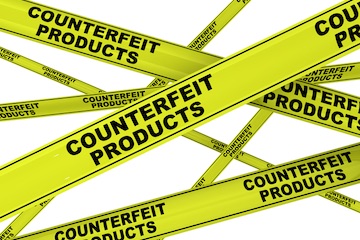On January 24, the U.S. Department of Homeland Security issued a report at the request of President Trump signaling the federal government’s intention to crack down on ecommerce sales of counterfeit goods. In the report, entitled “Combating Trafficking in Counterfeit and Pirated Goods” (PDF), the federal government all but declares that ecommerce is a threat to national security.
“The rapid growth of e-commerce has revolutionized the way goods are bought and sold, allowing for counterfeit and pirated goods to flood our borders and penetrate our communities and homes. Illicit goods trafficked to American consumers by e-commerce platforms and online third-party marketplaces threaten public health and safety, as well as national security.”
The report also states, “DHS finds the current state of e-commerce to be an intolerable and dangerous situation that must be addressed firmly and swiftly by strong actions within the Department and across other relevant agencies of the U.S. Government.”
…DHS finds the current state of e-commerce to be an intolerable and dangerous situation that must be addressed firmly and swiftly
The report focuses on two of President Trump’s frequent targets: China (the source of most counterfeit products) and Amazon (which unwittingly lists most counterfeits). The report describes enforcement penalties available now to DHS, “best practices” for marketplaces and merchants, and recommendations to Congress for new anti-counterfeit laws. Among the immediate actions available to DHS are civil penalties to repeat counterfeit offenders.
The government’s announcement of a crackdown comes just after the negotiations for a new trade agreement with China. That agreement would require China to take action to cut down on the export of counterfeit products.
Third-party Marketplaces
The report takes an aggressive stance against marketplaces, especially Amazon, eBay, and Alibaba.
“…third-party marketplaces and their supporting intermediaries have also served as powerful stimulants for the trafficking of counterfeit and pirated goods. The central economic driver of such trafficking is this basic reality: Selling counterfeit and pirated goods through e-commerce platforms and related online third-party marketplaces is a highly profitable venture.”
The report shifts the responsibility from the seller to the platforms, especially when the platform performs fulfillment. The government intends to target North American warehouses by giving U.S. Customs and Border Protection (CBP) greater authority to view packages in warehouses and order business owners to destroy counterfeit goods. Warehouse and fulfillment center owners would be legally and financially liable.
“CBP will treat domestic warehouses and fulfillment centers as the ultimate consignee for any good that has not been sold to a specific consumer at the time of its importation,” the report states
Mark Morgan, acting commissioner of CBP, said the agency had seized an estimated $1.5 billion of counterfeit goods in 2019, and that 90 percent of those goods came from overseas. Various federal agencies intercepted nearly 28,000 shipments containing counterfeit goods last year.
Amazon
While Amazon is not singled out in the report, President Trump has expressed his antipathy for Amazon several times. In a 2017 tweet, the President said, “Why is the United States Post Office, which is losing many billions of dollars a year, while charging Amazon and others so little to deliver their packages, making Amazon richer and the Post Office dumber and poorer?” He has continued to attack Amazon since then.
Amazon is perhaps the most vulnerable because of its Fulfillment by Amazon program. Amazon has thus far avoided liability for fake products, saying third-party sellers bear the burden of authentication.
Amazon has thus far avoided liability for fake products, saying third-party sellers bear the burden of authentication.
“Amazon has been very successful at reducing their liability because of its large legal team,” stated Rob Dunkel, founder of 3PM Solutions, an ecommerce data analysis firm.
One court ruled that “Amazon should not be held liable for counterfeit products sold by third-party vendors that it handles via its Fulfillment by Amazon service.”
Now the government is saying Amazon is responsible because it warehouses fake products.
An Amazon blog post from November 2019 states that the company had already invested more than $400 million to protect against fake products and fake product reviews, and employs 5,000 people worldwide to deal with fraud and abuse. An Amazon spokesperson indicated the company will begin reporting all confirmed counterfeiters to law enforcement agencies.
Small Sellers
Amazon Marketplace sellers have been shouldering the responsibility of authenticating goods by themselves. Now they get to share the accountability with Amazon. However, Amazon will have to vet third-party sellers more carefully — particularly foreign ones — and bad actors are more likely to be banned.
“This is a good thing for honest sellers and shines a light on the bad ones,” says Dunkel.
Online merchants selling on their own websites will have to abide by any new regulations and laws, but the government is focusing its enforcement activities on the large marketplaces.
Used Goods
Used goods sold by consumers to other consumers are not affected by the new regulations. But used fake luxury goods are nonetheless a big problem. The CEO of The RealReal, the largest online luxury consignment site, boasted that there are “no fakes on our site” as everything was authenticated before being put up for sale.
CNBC investigated the claim, speaking with over 30 former employees and obtaining internal company documents showing that not everything is authenticated by an expert. After CNBC’s exposé, the company admitted that its claim of not having any fakes on its website was not correct. TheRealReal will be adding artificial intelligence and machine learning to its authentication process in the first quarter of 2020.







